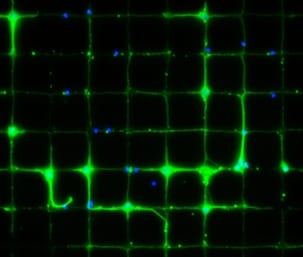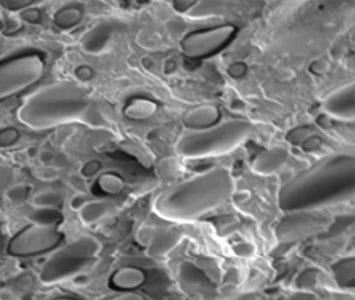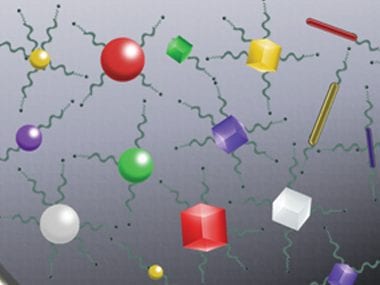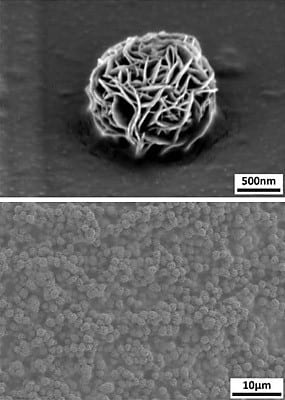Researchs show that combining nanoparticles and DNA nanotechnology can amplify the signal obtained from imaging the extracellular matrix.

Advancing our understanding of biointerfaces: FEBS-ESF Workshop “Biological Surfaces and Interfaces"
Ciro Chiappini, Imperial College London, and Ian T. Hoffecker, Kyoto University report on the recent workshop held in Sant Feliu de Guixols, Spain.

Attraction and Repulsion: Cellular Micropatterns on a Graphene Film
Cells can be grown in micropatterns of poly-D-lysine on graphene, opening a door for cell bassed sensor applications.
Non-viral nanoparticle vectors delivering biomolecules more efficiently
Scientists have found an efficient way to deliver nanoparticles containing a wide range of biomolecules without using endocytosis, for faster drug delivery.

Want to smash stuff on cellulose bioplastics? Just add polyethylene!
Bioplastics have often poor mechanical properties. Adding a small amount of traditional petroleum plastics solves the problem.

Any which way you can: Nano-toolboxes for programmable self-assembly
Molecular self-assembly of multifunctional nanoparticle composites with arbitrary shapes and functions
Polymer film could deliver safer vaccines more easily
Polymer film that gradually releases DNA coding for viral proteins could offer a better alternative to traditional vaccines.

New organic metamaterials developed with mechanical metaproperties
A new hydrogel created by Cornell researchers is so soft that it can flow like a liquid and then return to its original shape.

Oxidative damage in DNA-bases – potential for drug design
Prof. Mishra’s group at Banaras Hindu University, India has exhaustively studied two specific reactions of hydroxyl and perhydroxyl radicals.

DNA as a Future Component of Electronics
Researchers develop conducting nanostructures based on metallized DNA.










